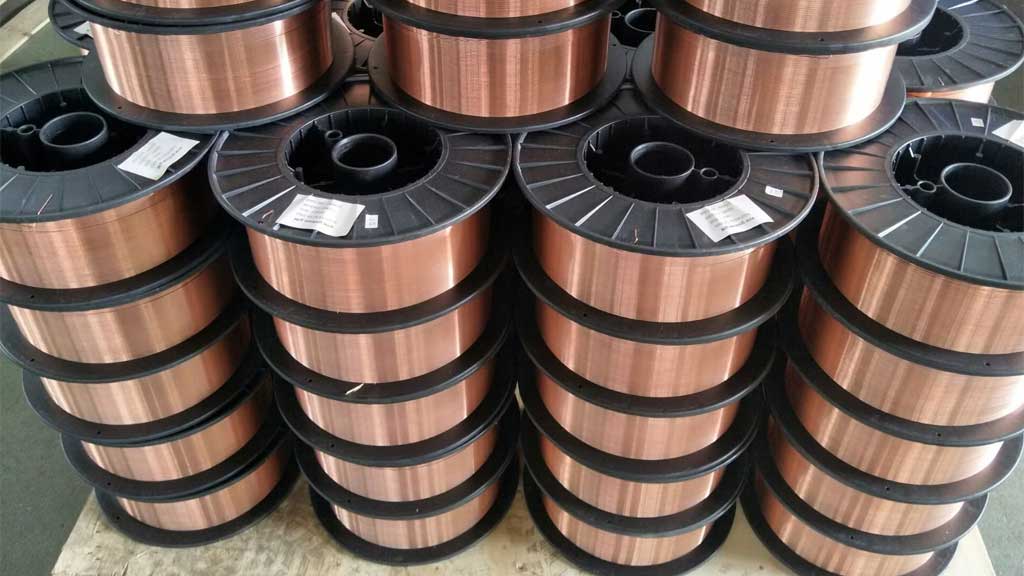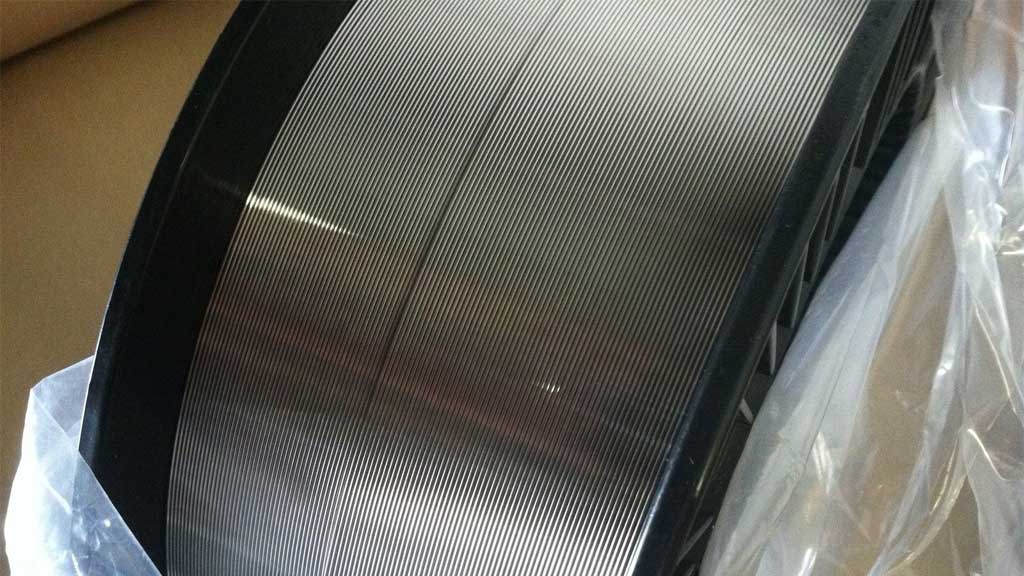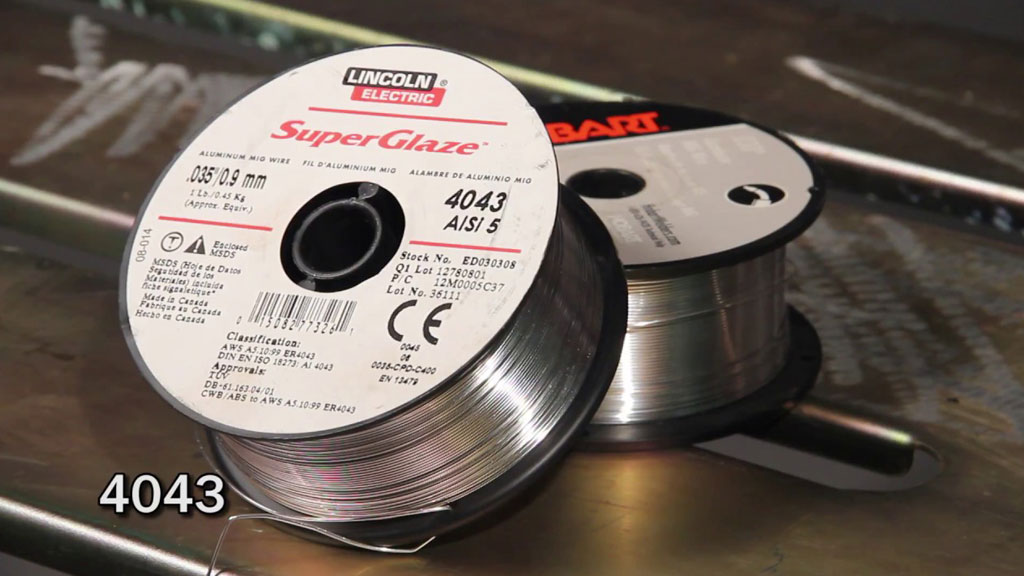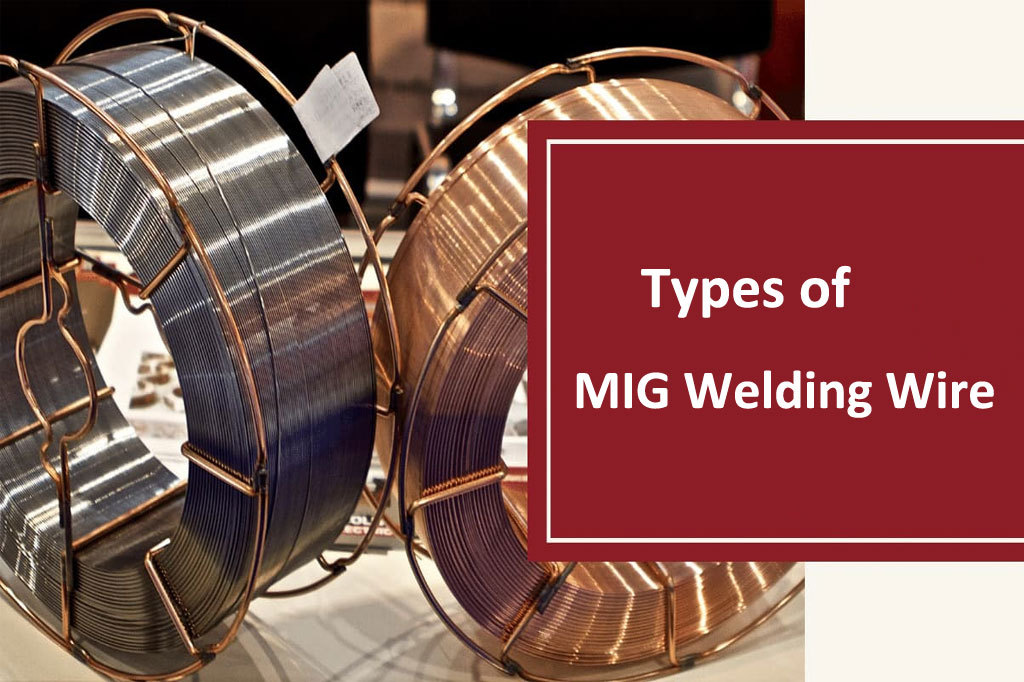The type of MIG welding wire you choose is crucial, as it directly impacts the quality, strength, and appearance of your weld. The wire not only provides filler material but also affects the ease of the metal welding process, the appearance of the weld, and the overall strength of the joint.
Now, we will dive into the different types of MIG welding wires, their characteristics, and their common applications.
1. Mild Steel MIG Welding Wire

Characteristics:
- Material: Made from carbon steel, mild steel welding wire is one of the most common types used in MIG welding.
- Common Sizes: Available in diameters ranging from 0.023 inches (0.6 mm) to 0.045 inches (1.2 mm).
- Coating: Typically, it is uncoated or has a minimal coating to prevent oxidation.
Applications:
- Automotive Industry: Welding car body parts, frames, and other components.
- Construction: Used for general fabrication of mild steel structures, steel beams, and piping.
- Sheet Metal Work: Ideal for welding thin sheet metal.
Mild steel wire is economical and suitable for projects that don’t require high-strength welds or exposure to extreme conditions.
2. Stainless Steel MIG Welding Wire

Characteristics:
- Material: Made from a combination of iron, carbon, and chromium, stainless steel wires offer corrosion resistance and strength.
- Common Sizes: Available in 0.023 to 0.045 inches (0.6 to 1.2 mm) diameter.
- Coating: Stainless steel MIG wire often has a copper coating to prevent rust during storage.
Applications:
- Food Processing Equipment: Ideal for welding equipment that needs to resist rust and corrosion.
- Chemical Processing: Used for pipes and storage tanks exposed to harsh chemicals.
- Medical Equipment: Common in the production of sterile, corrosion-resistant components.
This wire is more expensive than mild steel wire but is necessary for projects requiring durability and resistance to corrosion, especially in industries like food processing, pharmaceuticals, and medical equipment manufacturing.
3. Aluminum MIG Welding Wire

Characteristics:
- Material: Aluminum wires are typically made from pure aluminum or aluminum alloys (e.g., 4043, 5356) and are known for their lightness and resistance to corrosion.
- Common Sizes: Available in diameters ranging from 0.030 inches (0.8 mm) to 0.045 inches (1.2 mm).
- Coating: Often has a silicon or magnesium alloy to improve the weld’s appearance and reduce spatter.
Applications:
- Automotive Industry: Ideal for aluminum body panels, wheels, and engine components.
- Aerospace Industry: Used for welding parts that require lightweight and high-strength characteristics.
- Marine Applications: Ideal for components exposed to harsh saltwater environments.
Aluminum MIG wire is highly flexible and provides excellent arc stability, making it a top choice for industries where light weight and strength are essential.
4. Flux-Cored MIG Welding Wire
Characteristics:
- Material: These wires are hollow, with a flux core that provides shielding gas when welding, making them ideal for outdoor and high-wind environments.
- Types:
- Self-Shielded Flux-Cored Wire (No Gas Needed): Uses the flux core to protect the weld pool, ideal for outdoor applications.
- Gas-Shielded Flux-Cored Wire: Requires an external shielding gas, similar to traditional MIG welding.
- Common Sizes: Typically found in 0.030 to 0.045 inches (0.8 to 1.2 mm) diameter.
Applications:
- Construction: Suitable for heavy-duty fabrication work, such as welding structural steel or thick plate steel.
- Pipeline Work: Common in welding thick metal in pipelines and large infrastructure.
- Shipbuilding and Heavy Equipment: Used in outdoor conditions or places where traditional shielding gas might be difficult to maintain.
Flux-cored wire is an excellent choice for welding thick metals or working in challenging environments, where traditional MIG welding might fail.
5. Copper-Coated MIG Welding Wire
Characteristics:
- Material: Copper-coated mild steel wire, which provides increased conductivity and enhances the wire’s feeding ability.
- Coating: A thin layer of copper is applied to the wire to prevent rust and improve feeding through the welding machine.
- Common Sizes: Available in a wide range of sizes, typically from 0.023 to 0.045 inches (0.6 to 1.2 mm).
Applications:
- Automotive Manufacturing: Ideal for welding thin sheet metal or lightweight car components.
- General Fabrication: Commonly used for general-purpose welding of mild steel.
- Home and Hobby Welding: Popular for DIY and light industrial use.
The copper coating helps prevent oxidation and improves the wire’s longevity, making it a durable option for general-purpose welding.
6. Dual Shield MIG Welding Wire
Characteristics:
- Material: A combination of flux-cored wire and a solid wire with an external shielding gas.
- Coating: The core consists of flux while the outer portion is solid wire, which helps enhance weld penetration and strength.
- Common Sizes: Typically available in 0.030 to 0.045 inches (0.8 to 1.2 mm).
Applications:
- Heavy Construction: Suitable for welding thick materials and large structural components.
- Pipe Welding: Used in high-stress environments where weld strength is critical.
- Shipbuilding: Perfect for large-scale welding tasks that demand exceptional strength and long-lasting durability.
Dual Shield MIG wire provides excellent penetration and weld strength, making it a top choice for heavy-duty and high-strength applications.
Comparison Chart of Different Types of MIG Welding Wire
Types | Material | Coating | Common Sizes | Best For |
Mild Steel MIG Welding Wire | Carbon Steel | Uncoated or minimal coating | 0.023" - 0.045" (0.6 mm - 1.2 mm) | General fabrication and mild steel welding |
Stainless Steel MIG Welding Wire | Iron, carbon, chromium (Stainless Steel) | Copper coating (for storage) | 0.023" - 0.045" (0.6 mm - 1.2 mm) | Corrosion-resistant and durable welding |
Aluminum MIG Welding Wire | Aluminum or Aluminum Alloys (e.g., 4043, 5356) | Silicon or magnesium alloy coating | 0.030" - 0.045" (0.8 mm - 1.2 mm) | Lightweight and corrosion-resistant welding |
Flux-Cored MIG Welding Wire | Carbon Steel or Stainless Steel | Flux core (self-shielded or gas-shielded) | 0.030" - 0.045" (0.8 mm - 1.2 mm) | Outdoor or high-wind conditions, thick metal welding |
Copper-Coated MIG Welding Wire | Mild Steel | Copper coating | 0.023" - 0.045" (0.6 mm - 1.2 mm) | Smooth feeding and rust prevention |
Dual Shield MIG Welding Wire | Flux-cored & Solid wire mix | Flux core with solid wire | 0.030" - 0.045" (0.8 mm - 1.2 mm) | Heavy-duty, high-strength welding |

